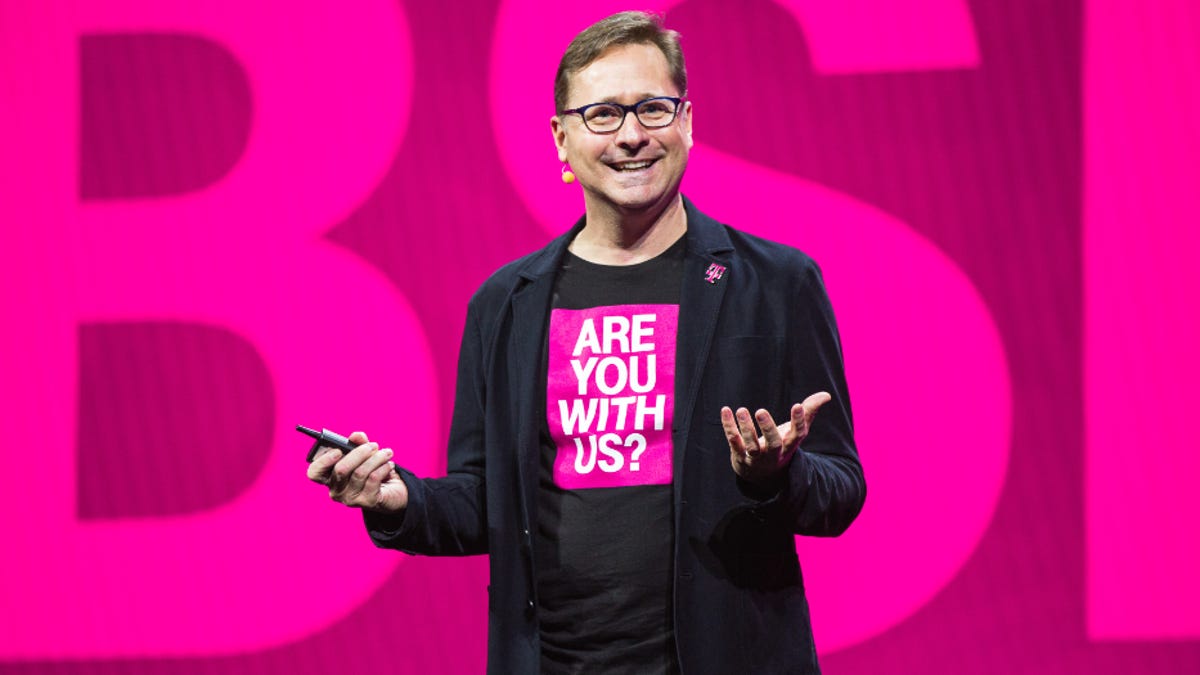T-Mobile's New Identity: Fewer F-Bombs, More 5G
Under CEO Mike Sievert, the company takes fewer potshots at competitors as it reconstructs its image.

T-Mobile CEO Mike Sievert took the reins two years ago.
The past two years have been a whirlwind for everyone. For T-Mobile, adjusting to the pandemic came on top of wrangling with a new company identity and new CEO. As a company used to playing disrupter in the wireless industry, it faced a few big disruptions of its own.
On April 1, 2020, T-Mobile finally completed its drawn-out merger with Sprint to become the nation's second-largest wireless carrier. Just as importantly, it replaced outspoken and brash CEO John Legere with long-time lieutenant Mike Sievert.
"Somehow [we] managed to merge two very large companies to create a new better company amidst the global pandemic and all of that uncertainty," Sievert said in an interview last week, noting that this flurry of activity happened just three weeks after sending staff home at the start of the lockdowns in 2020.
T-Mobile under Sievert has been more reserved in its rhetoric and less prone to going off on competitors. The company had missteps, including the heavily hyped streaming TV service TVision, which shut down after just five months. But it also launched a 5G-based home internet service and added 5.5 million subscribers last year. Having gone nearly a year since its last "Un-carrier" event, one can question whether the company is moving on from that mantra now that it's no longer an underdog.
"Not even close," Sievert said, adding that the carrier has focused on the "biggest pain point," which has been improving its network's coverage and speed over the past two years.
"It's just a matter of time before 5G is the network," Sievert said, noting that around half of its traffic runs on its newest service. "We're two years ahead of the rest of our competitors on 5G today, and we're poised to be two years ahead of them two years from now."
What hasn't changed for the carrier, however, is completely shaking off its earlier reputation as inferior to Verizon and AT&T. That issue persists even though the company now has a larger and more developed 5G offering compared to its rivals.
"Brands are powerful and stubborn," he said, acknowledging that it's tough to convince people with preconceived notions. "Customers give us credit for being the best value, they give us credit for providing the best service. ... But it's also hard to convince people that we're the best network when they have long-established ideas."
"To me, the challenge is... how do you bring that to light so that people understand it?"
Evolution of the "un-carrier"
T-Mobile's transformation from the bottom of the US carrier battle to the No. 2 provider took years, with Sievert playing several major roles since joining T-Mobile in 2012 as its chief marketing officer. He was involved in crafting the provider's "Un-carrier" marketing strategy, which painted it as a disruptor and liberator of the wireless industry constantly solving "pain points."
T-Mobile's website features many of the announcements ranging from the bundling of services like Netflix with family plans, the return of unlimited data and the ability to use your phone internationally without roaming charges.
These moves helped spur T-Mobile's comeback story and under Legere, the provider often used these "un-carrier" events to take shots at its rivals.
Over the past two years, however, the pace of "un-carrier" events and the attacks have slowed considerably.
"T-Mobile CEO Mike Sievert has been less bombastic than John Legere's bad-boy persona, but that is due to T-Mobile's improved competitive position and strong execution," said Avi Greengart, an analyst for research firm Techsponential, noting that the "change in tone is deliberate" and that Sievert was T-Mobile's head of marketing under Legere.
"When T-Mobile's network and spectrum position was behind rivals, its marketing had to make up for it," Greengart said. "Today, T-Mobile's improved network economics allows it to compete not just on price but also go after enterprise and automotive accounts, and the CEO doesn't need to drop F-bombs in every press conference."
The impact of that disruptive streak is still causing ripples in the industry, with AT&T and Verizon still upping their game to combat a stronger T-Mobile.
"Others have picked up that pace because they were tired of being beaten by T-Mobile," said Roger Entner, an analyst at Recon Analytics.
AT&T now has device offers aimed at new and existing customers, while Verizon has increasingly upped the amount of content it's bundling with its wireless plans.
"T-Mobile has become less hell-bent on un-carrier moves, but the other two guys have picked up the slack," Entner said. "Overall the consumer is still benefiting, it's just that the center of innovation has spread out."
Sievert, for his part, isn't about to let anyone forget about T-Mobile or its earlier "un-carrier" moves: "Not only am I focused on more ('un-carrier' announcements) in the future, but I'm also focused on making sure everybody knows the ones that we've already done. Because they are still here and they are still differentiating."

